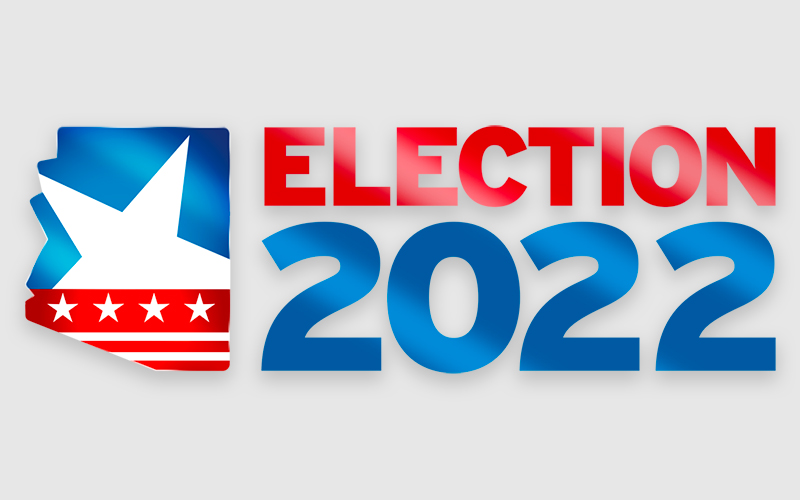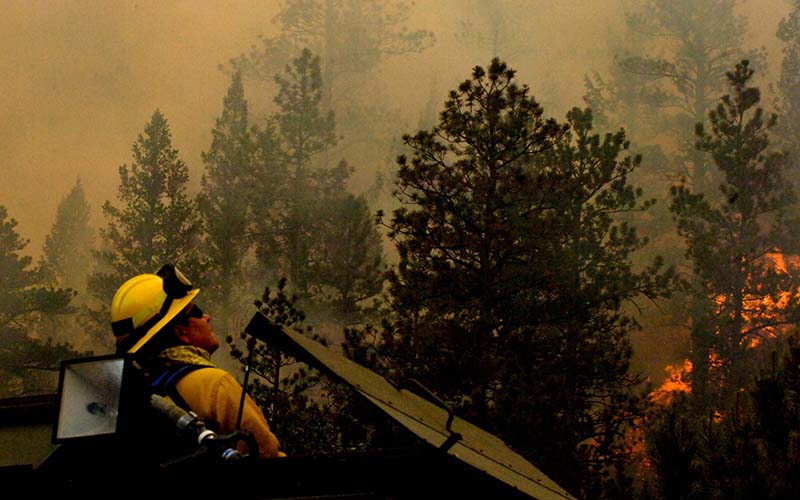WASHINGTON – Bryan Jeffries does not think one-tenth of one penny is too much to ask for the benefit of fire districts across Arizona “that are in a complete crisis.”
“Revenues for funding our vital emergency services have been cut drastically over the last decade, and so that funding needs to be made up for somehow,” said Jeffries, president of the Professional Fire Fighters of Arizona.
That “somehow” is Proposition 310, a ballot question that would raise the state sales tax from 5.6% to 5.7% for the next 20 years with the new revenue distributed to the 144 fire districts in the state.
Jeffries notes that the proposition would add just a penny in tax to every $10 in purchases. But critics say those pennies add up, with one opponent estimating that taxpayers would be hit with an additional $150 million a year.
“Taxpayers deserve better,” said Aimee Yentes, vice president of the Arizona Free Enterprise Club. “There are going to be millions and millions of people in the state that do not benefit. They can’t even afford gas to get to work.
“Come back with a better solution that doesn’t punish people who aren’t going to benefit from this service,” Yentes said.
But supporters argue that the proposition will benefit anyone traveling through a rural part of the state.
“You are traveling to Flagstaff,” said Scott Freitag, fire chief for the Central Arizona Fire & Medical Authority. “You’re going up the I-17. The last fire station that’s on the I-17 is the one in Black Canyon City. Between there and Flagstaff, there are no fire stations directly on the interstate, but you are traveling all through fire districts the entire way.”
The 144 fire districts that would benefit from the new tax currently serve about 1.5 million people in Arizona, mostly in rural areas of the state, according to the Arizona Fire District Association.
Unlike fire departments, which serve cities and are mostly funded by municipal governments, fire districts are independent of any city or county government and funded through local property taxes. And those often are not enough, they said.
“Districts are struggling,” said Darlene Packard, a Central Arizona Fire & Medical Authority member, in a statement in support of the proposition. “85 to 95% of their revenue is based on property taxes.”
Money raised under the new tax would be divided between the districts under a formula that takes into account the size of each district, and guarantees that no district gets more than 3% of the total in a year.
“The larger districts would get a larger portion of the money, and the smaller get a smaller portion, but it’s an equitable amount,” Jeffries said. “Every district would receive a very fair and ample boost to their budgets.”
There are no restrictions on how the money can be used, but supporters said firefighting equipment is likely to be the main use.
“A lot of the smaller districts were running fire engines from the 1980s or using SCBAs (self-contained breathing apparatus) that are outdated and should no longer be used,” Freitag said.
Still, opponents like Cindy Biggs argue that not all fire districts need the support. Biggs, who serves as chair of the Gilbert County Island Fire District, said that in her district, “we do not need a second funding stream.”
“We certainly do not want all the residents in Arizona to subsidize our operations. A tax increase that everyone in the state must pay…is bad public policy,” she wrote in her statement in opposition to the proposition.
Yentes said fire districts have been using tax money “irresponsibly.” She called the proposed tax hike an “ill-convinced solution for a poorly defined problem,” saying the issue needs more study.
“Is this a $10 million problem? Is this a $500 million problem? Is this a $200 million problem?” she asked.
But Jeffries and other supporters say that lives are stake. They point to emergency response times, which many say are too high for fire districts.
“9-1-1 emergency calls often take upwards of 30 minutes for a response,” Jeffries said in a statement. In a perfect world, he said, firefighters try to get to people in five minutes.
“In emergencies, minutes and seconds count,” Jeffries said. “Right now, response times are going up dramatically throughout the state of Arizona in our fire districts as a result of this lack of funding.”
That was echoed by Ivan Anderson, a firefighter with the Verde Valley Fire District, who said in a statement that call volumes have gone up while fire district budgets have been reduced.
“In the last five years, nearly, 2,000 people have died in vehicle crashes on Arizona’s rural roads,” he said in a statement. “Another 30,000 have been injured.”
Even if the money is needed, Yentes said, now is not the time to increase taxes. “Inflation is through the roof and right now is not a good time,” she said.
Jeffries rebuttal to Yentes is simple.
“Hold your breath for 10 minutes, and then when no one is there to provide you relief see how well you do,” he said.


